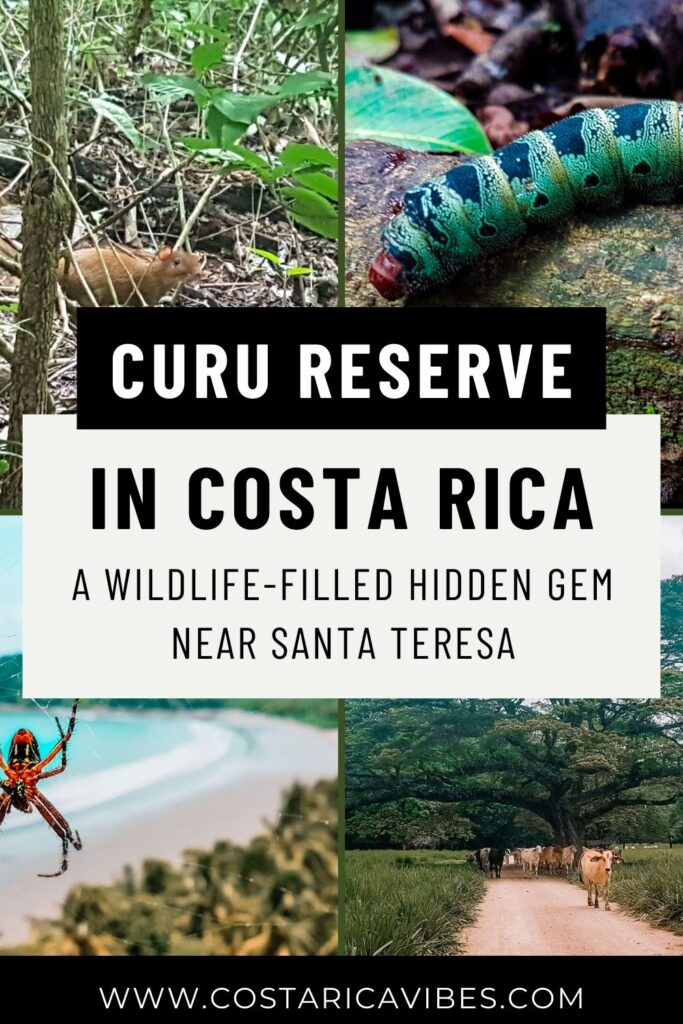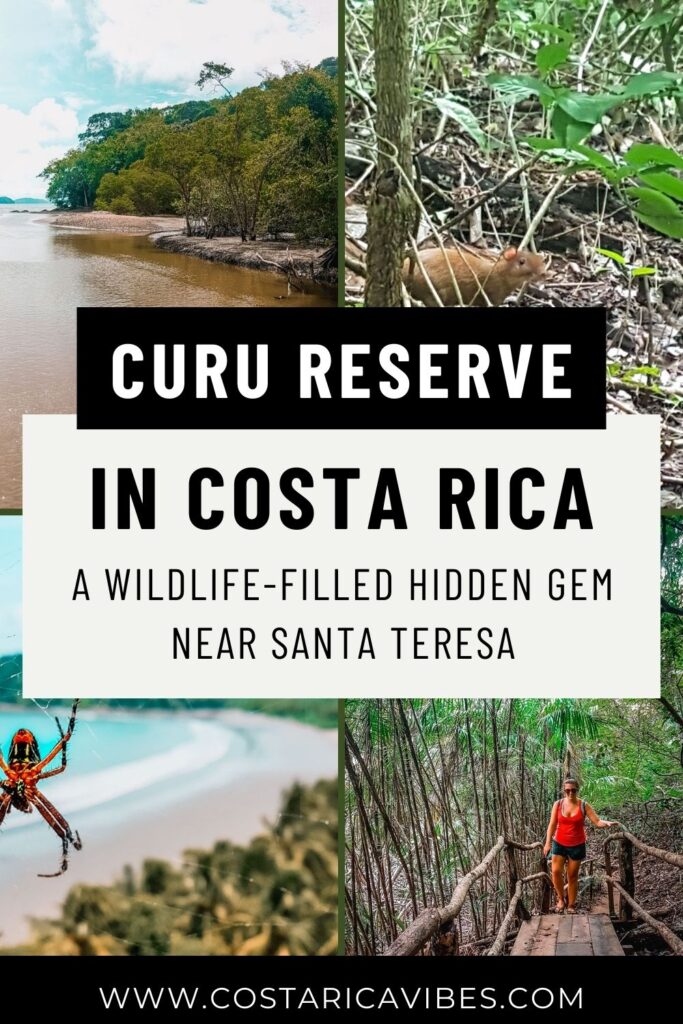Curu Wildlife Refuge in Costa Rica: A Flora and Fauna Paradise
Disclaimer: This article may contain affiliate links. Clicking on them may earn Costa Rica Vibes a commission, at no extra cost to you. Thank you for your support!
Curu Wildlife Refuge is located near the town of Paquera on the Nicoya Peninsula in Costa Rica. The refuge is not widely visited by tourists, making it the perfect hiking and wildlife oasis.
Here you can go hiking, relax on the pristine beach, spend a night in the cabins on the property, swim in the ocean, have a picnic, and more!
The first time we visited here we really were not expecting much. But, the Curu Reserve completely surprised us. It’s now a place we almost always stop at when driving by.
Anyway, enough of rambling about how great this spot is, let’s get down to the complete guide to visiting Curu Wildlife Refuge! We created this guide to inform you about how to get here, opening hours, what you can expect from the hikes, and more.
Important Info About the Reserve
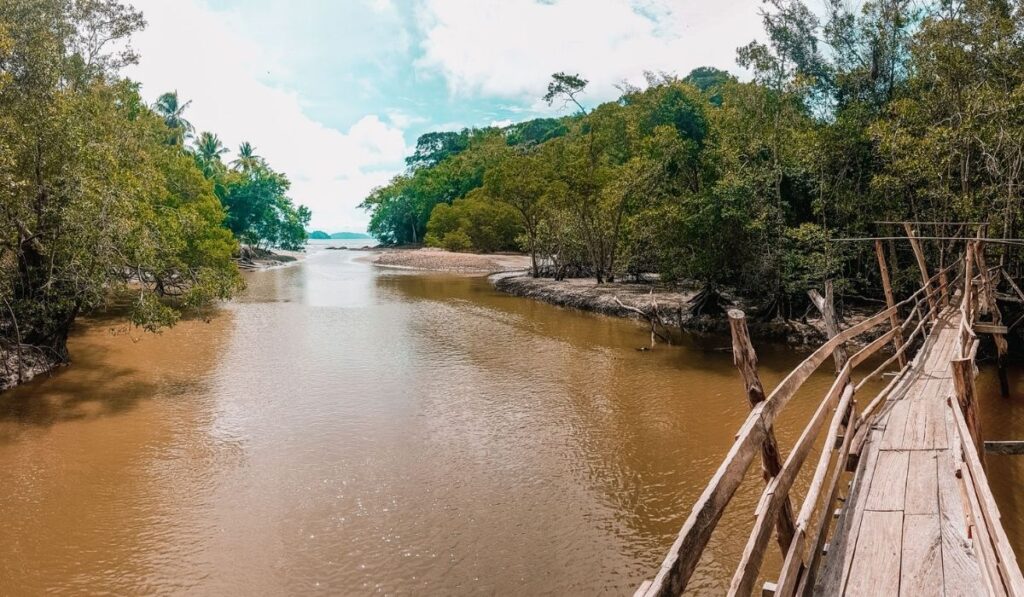
Here is everything you need to know about Curu Reserve.
I will preface this by saying the Curu Reserve website is not the best. It is hard to find all the necessary info on their site. So, we tried to give you the best info we have from the last time we visited.
Opening Hours
The refuge is open daily from 7 am until 3 pm.
If you opt to spend the night here in a cabin or take an evening tour, then you will be able to access parts of the reserve after 3pm.
Entry Fee
It costs $15 per person to enter the refuge. If you are a Costa Rican national it is about $4 to enter.
Directions
If you are going to Santa Teresa, Mal Pais, or Montezuma you will likely pass the Curu Reserve. It is located about five miles past the downtown area of the town of Paquera/ Paquera ferry landing.
Just follow the road as if you are heading to Montezuma/ Santa Teresa and you will see the refuge on your right-hand side.
In Waze or Google Maps we entered “Curu” and clicked “Refugio Nacional Curu” to get directions. It will be the top result that shows up.
↪FIND OUT HOW TO GET UP TO 10% OFF YOUR CAR RENTAL IN COSTA RICA!
Note: If you are unsure what is the best way to get around in Costa Rica, we have a complete guide to driving directions here.
Parking
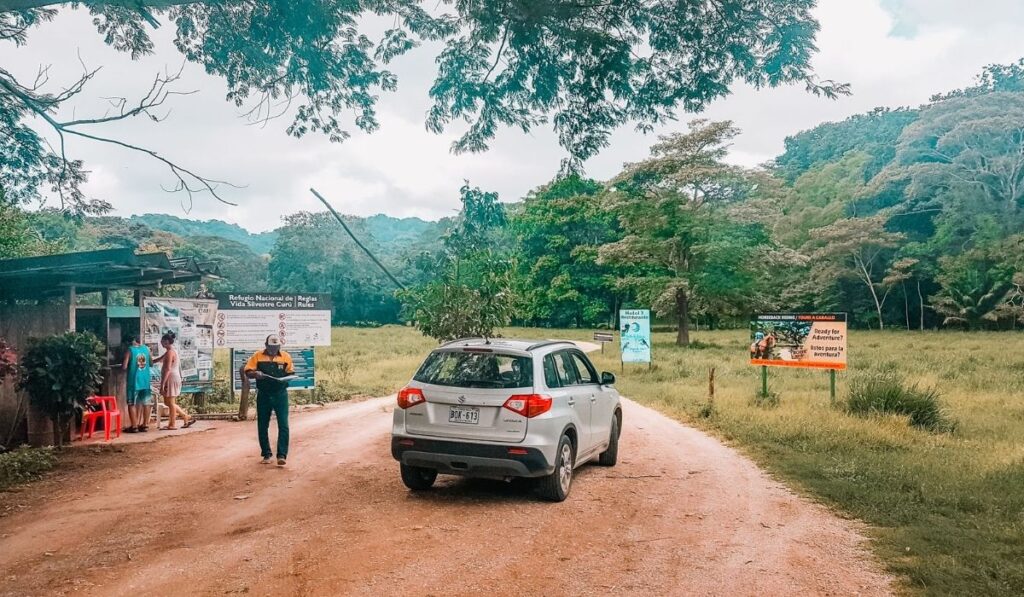
Once you enter the refuge you will stop at a ranger station. This is where you will pay for admission and get a map from the ranger.
You can then drive straight down the road until you reach the main parking lot. I’d say it’s about 1.5 miles down. However, there are trails along the way and you are welcome to pull your car off on the side of the road to explore any of the trails.

Just please always remember not to leave anything of value in your car. When we visited there were a lot of people around, so I don’t think anybody would try to break into a car, but you never know!
Park Facilities
Curu Reserve has more as far as facilities than any other national park I have seen in Costa Rica. There are bathrooms near the parking lot, an info center, a cafeteria, cabins you can rent, and their own tourism company for day tours.
The cafeteria is open for breakfast, lunch and dinner. They serve typical Costa Rican food like rice, beans, salad, vegetable, and meat.
We have not eaten here, but I read some reviews online that said the food was simple but actually pretty good.
What to Wear
We Suggest Wearing:
- Quick drying shorts of pants
- Quick drying hiking shirt
- A bathing suit (you can always opt to change into your bathing suit at the restrooms on the property, but they aren’t the most spacious).
- A sun protecting hat
- Sunglasses
- A sunglasses strap
- Sneakers, hiking boots, or Keens
- SPF 50 Sunblock
What to Bring
We Suggest Bringing:
- A waterproof day pack
- A full water bottle (we swear by LifeStraw bottles)
- Bug spray (usually they won’t bother you until the sun goes down)
- A snack
- Pocket binoculars
- SPF 50 sunblock to reapply as needed.
Have You Purchased Travel Insurance Yet?
Don’t let unexpected medical expenses or trip interruptions overshadow your dream Costa Rican vacation.
Heymondo is our favorite travel insurance for Costa Rica. Their comprehensive plans will provide a swift resolution to any travel-related disruptions.
Click here to secure your worry-free Costa Rican adventure with Heymondo insurance
This refuge is set up really well, so you can check out a few trails and can easily stop by your car before exploring more.
In the car, we suggest leaving some snacks, towels for if you want to go swimming (we swear by microfiber towels because they dry fast and you can easily fit them in your luggage), and extra water bottles.
Check out our Full Costa Rica National Park Packing List on Amazon for everything you need!
Amount of Time You Need
We usually spend about three hours here.
However, you could easily spend a whole day here if you want to take advantage of all that Curu Wildlife Refuge has to offer and participate in any of the tour options.
Best Time to Visit
Your best chance of having great weather is by starting your hikes in the morning. If there are rain storms they usually roll in around mid-afternoon.
Plus, most wildlife is most active early in the day.
The dryest months are from mid-December until mid-April. These are also the months with the most tourists, so the refuge will be more crowded.
The Hiking Trails
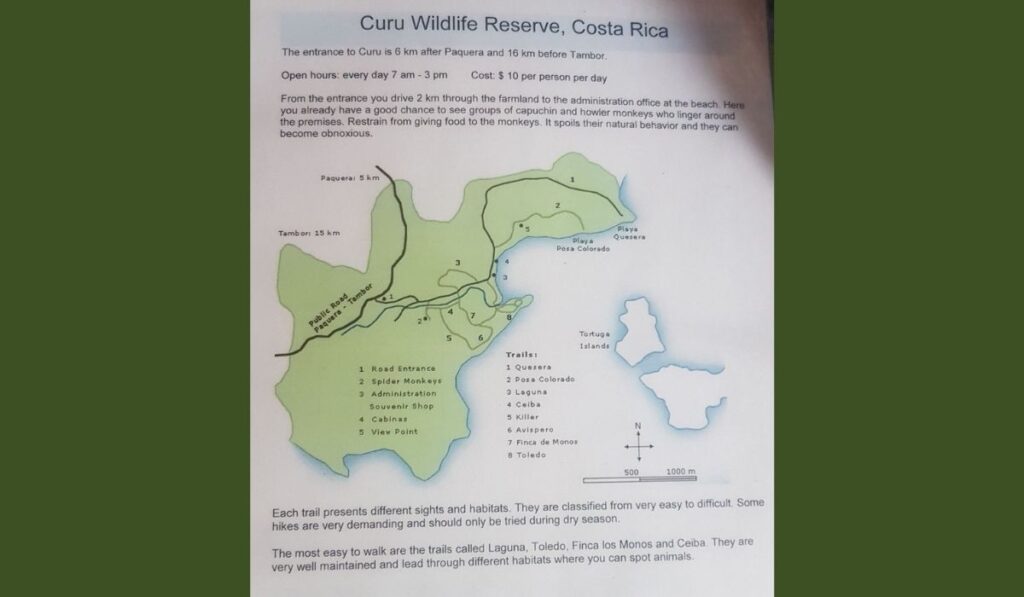
There are tons of hiking options at Curu. We found the trails to be relatively easy for the most part. All of the trails were well maintained.
The map above is accurate. Most of the trails are short and don’t take much time to walk to, but we are also generally fast walkers.
Wildlife at Curu Reserve
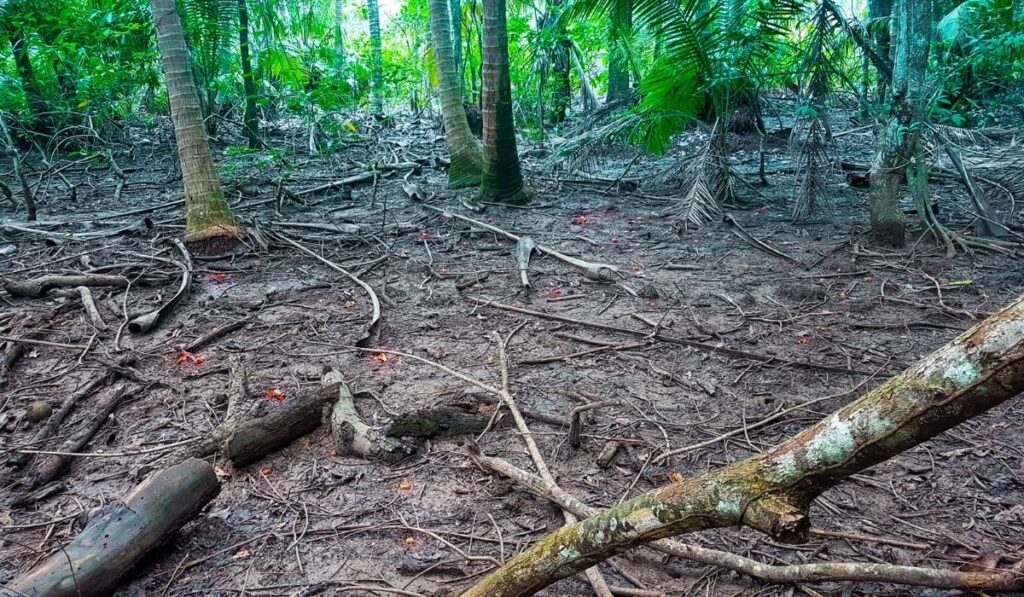
The Curu Wildlife Refuge website states that their refuge is home to:
- 78 species of mammals
- 87 species of reptiles
- 25 types of amphibians
- and over 500 species of plants
On our visits we have seen: monkeys, agoutis, centipedes, entire fields of crabs, and deer. We had actually never seen deer in Costa Rica before.
Background on the Reserve
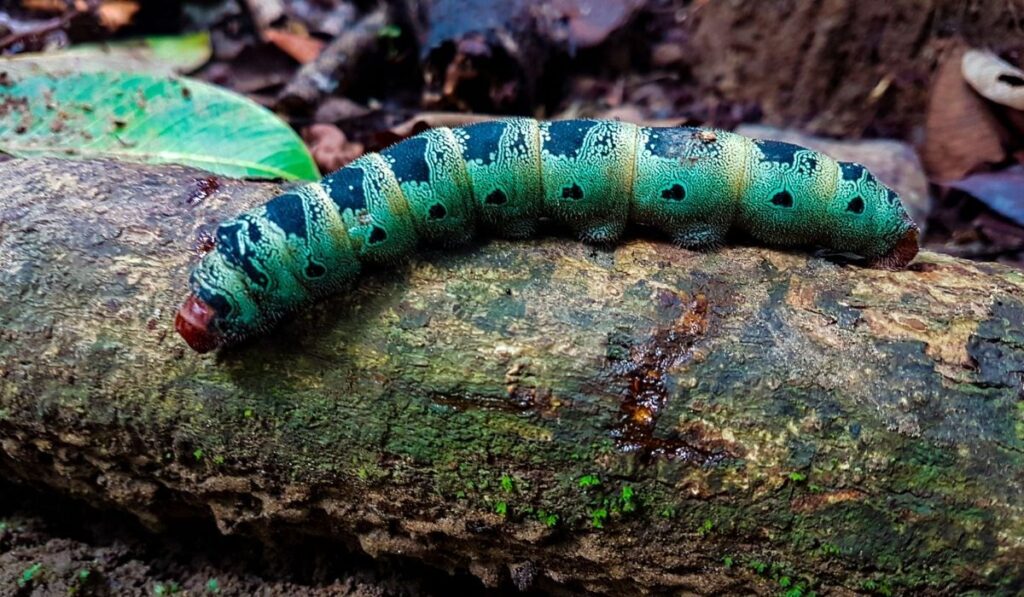
In 1933, Federico Schutt de la Croix settled on what’s now known as Curú Reserve.
He initially aimed to create a self-sustaining farm, setting up a hacienda and cultivating crops like rice, corn, and mangos. Over time, the focus shifted towards wildlife conservation and eco-tourism.
In 1974, some of the land was overrun by squatters. This prompted the Schutt family to ask the Costa Rican government for help protecting the land.
By 1981, the government designated most of this land as a “Protected Forest” and in 1983, the Curú Wildlife Refuge was born. It was Costa Rica’s first private wildlife sanctuary.
Day and Night Tours from the Reserve

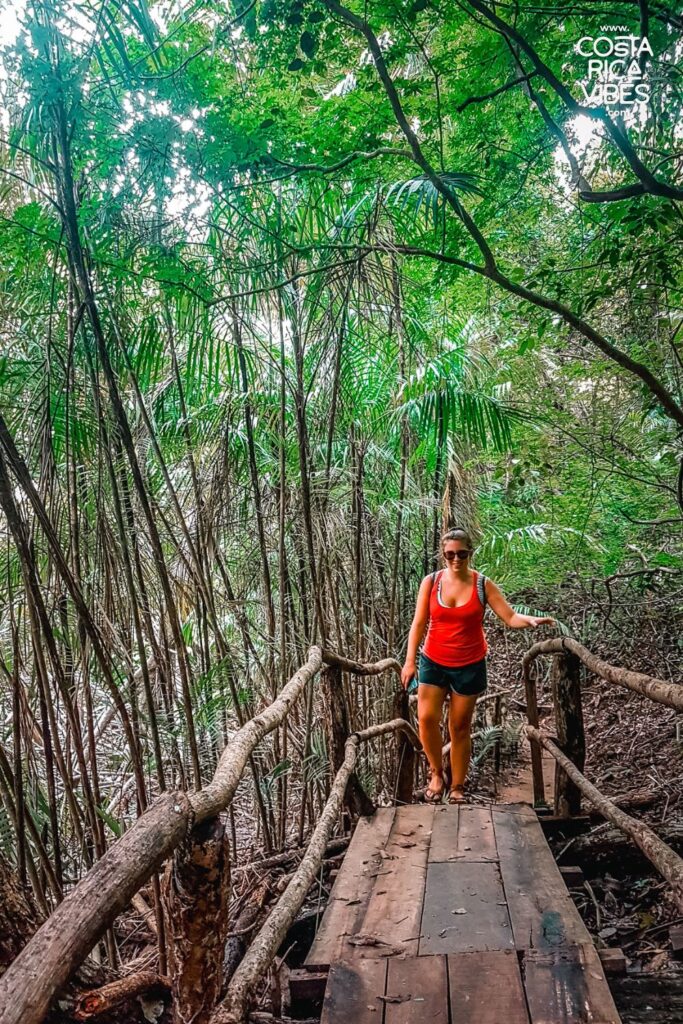
One of the most unique things about the refuge is that they offer a lot of different day tours at very fair prices.
However, we have not personally taken any tours from Curu and it is really difficult to figure out how to book tours from their website. There is a horseback riding tour that seems easy to book.
I know they offer sports fishing, snorkeling, kayaking, a boat tour to Tortuga Island, a whale sightseeing tour, a horseback riding tour, and a bioluminescence night kayaking tour.
There is another Curu Reserve website that lists the tours with a contact for booking option, but I don’t know if they check it frequently.
Alternatively, you can call them if you are interested in a tour. The phone number is: +506 6209-3846
If you are staying in Montezuma or Santa Teresa and would like to visit Curu with a private guide and transportation we suggest this tour, but it is pricey. I think if you have a rental car you are much better off visiting on your own.
Spending the Night at the Cabins

The cabins look very basic and rustic from the pictures but they are also directly on the beach in the refuge.
If you are OK with a very basic place to stay, I think it could be really fun to sleep here. You get complete access to the reserve after all the guests leave for the day.
If you are interested in staying at the Curu Wildlife Refuge cabins you can get in contact with the reserve via their website here.
Just a warning, their website is not the best and it is hard to tell exactly what you are booking because there aren’t pictures of each cabin. So, I went through the details of each one to give you a little more info.
Cabin #1
Equipped with:
- One bedroom with a full size bed and two single bunkbeds
- Sleeps up to 6
- One bathroom
- There is a small kitchen area but it is not equipped
Cabin #2
- Three bedroom that have one full size bed and six bunk beds
- Sleeps up to 14
- One bathroom
- Kitchen area (NOT EQUIPPED)
Cabin #3
- Two bedrooms that have one full size bed and 3 bunk beds
- Sleeps up 8
- One bathroom
- Kitchen area (NOT EQUIPPED)
Cabin #4
- Two bedrooms that have one full size bed and 3 bunk beds
- Sleeps up 8
- One bathroom
- Kitchen area (NOT EQUIPPED)
Cabin #5
- Two bedrooms that have one full size bed and 3 bunk beds
- Sleeps up 8
- Kitchen area ( NOT EQUIPPED )
- One bathroom
Cabin #6
- Two bedrooms that have one full size bed,2 bunk beds
- Sleeps up to 6
- One bathroom
- No kitchen
You do have the option of adding on meals to your stay. I suggest doing this. Although some of the cabins have a kitchen, they are very basic and not the best for actually preparing a meal.
If you do not want to stay in the reserve there are a few other places to stay nearby. Our favorites are:
Eco Boutique Hotel – A nice hotel with incredible ocean views. We like this place for the amazing property with a nice pool.
B&B La Casa de Manito – Very budget-friendly accommodation option with breakfast included. The staff here will go above and beyond to make sure you have a nice stay.
Isla Chiquita Glamping Hotel – One of the best glamping spots in the country. Isla Chiquita is on its own island, so this is more of a destination for a honeymoon or romantic getaway.
Our Experiences at Curu Refuge
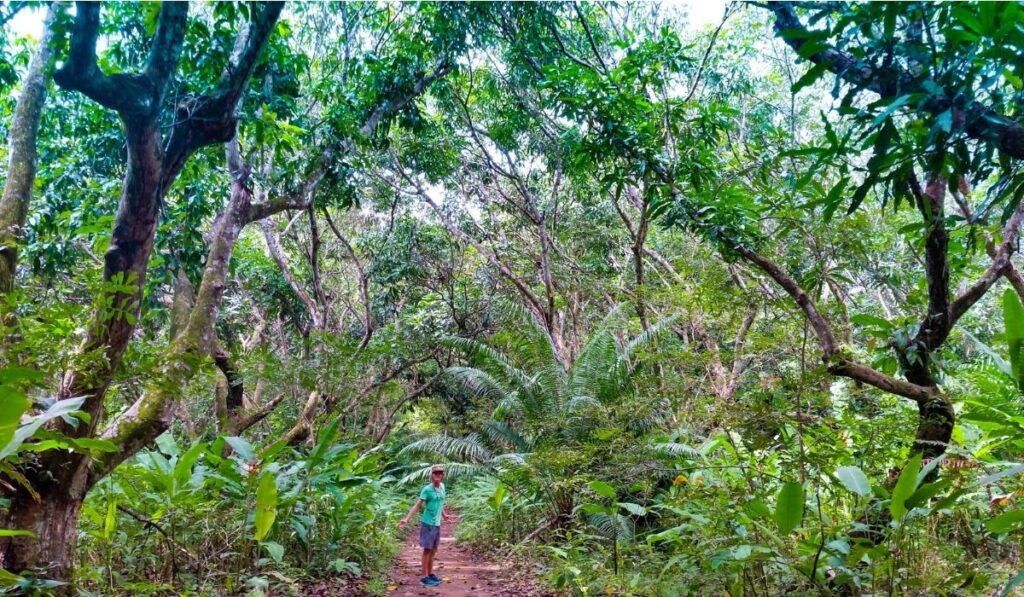
The first time we visited we had no idea what to expect.
We had actually never even heard of this place before until I started looking at things to do near the Paquera ferry landing.
Most people don’t do this and head straight down to Montezuma or Santa Teresa, but I was doing some research and discovered there is actually a lot to do in the Paquera area.
From the parking lot (labeled “Administration” on the map) we first hiked the trail Toledo. This trail was awesome because of the unique wooden bridge you have to cross towards the start of the walk.
We then hiked Finca de Monos, Ceiba, and Posa Colorado trails. This will then bring you out to the refuge road. We started walking back to our car and took a little detour to hike Laguna trail.
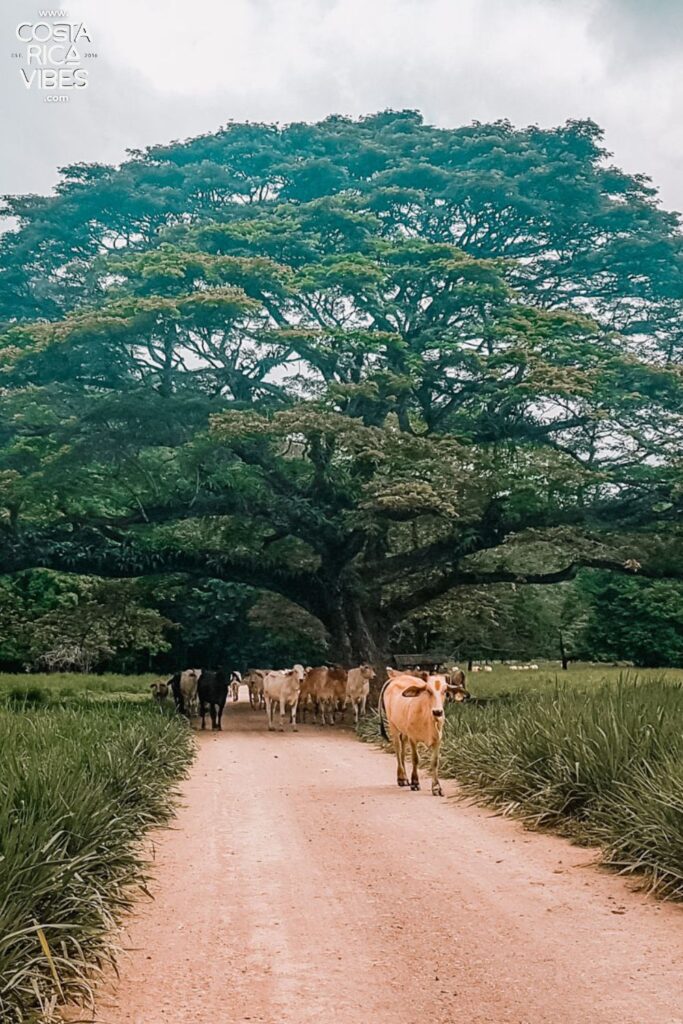
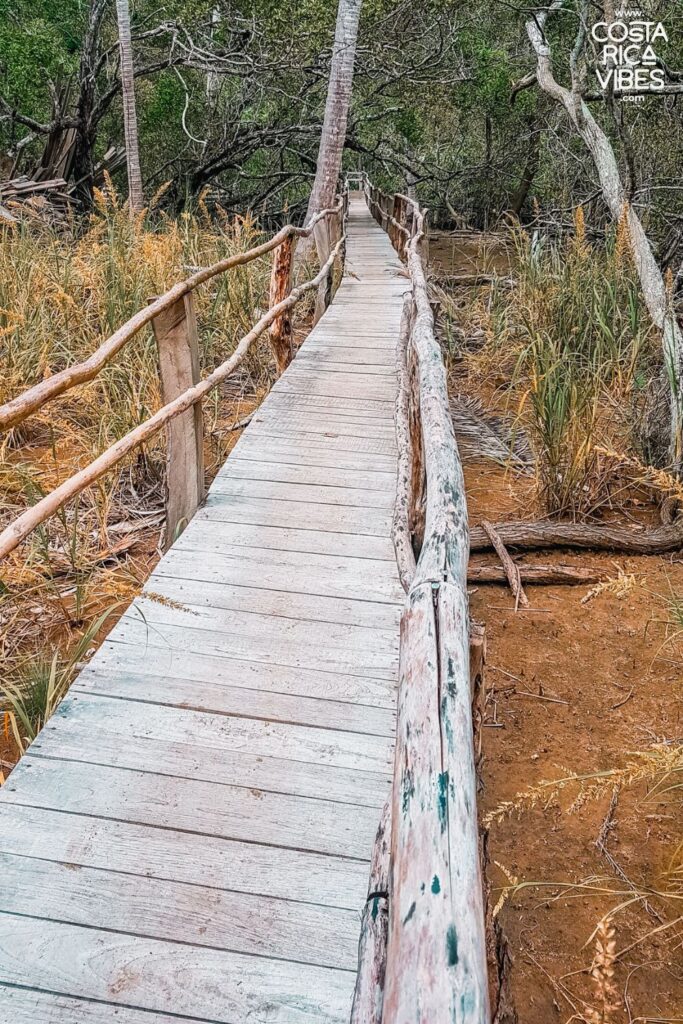
When we got back to our car we had a quick snack and restocked up on water before heading to the Posa Colorado trail.
We didn’t do the whole trail, but instead only went to the viewpoint (marked point number 5 on the map).
This trail was the only trail we walked which was a bit more exhausting. It is almost entirely uphill to get to the viewpoint, but it only took us about five minutes which made it completely manageable.
We hiked almost every single trail except for the trail called “Killer” (I was intimidated by that name) and the trail to Playa Quesera (it was just too hot at that point).
We were really happy that we brought our binoculars because some of the monkeys were very high up in the trees.
Helpful Tips for Visiting the Refuge
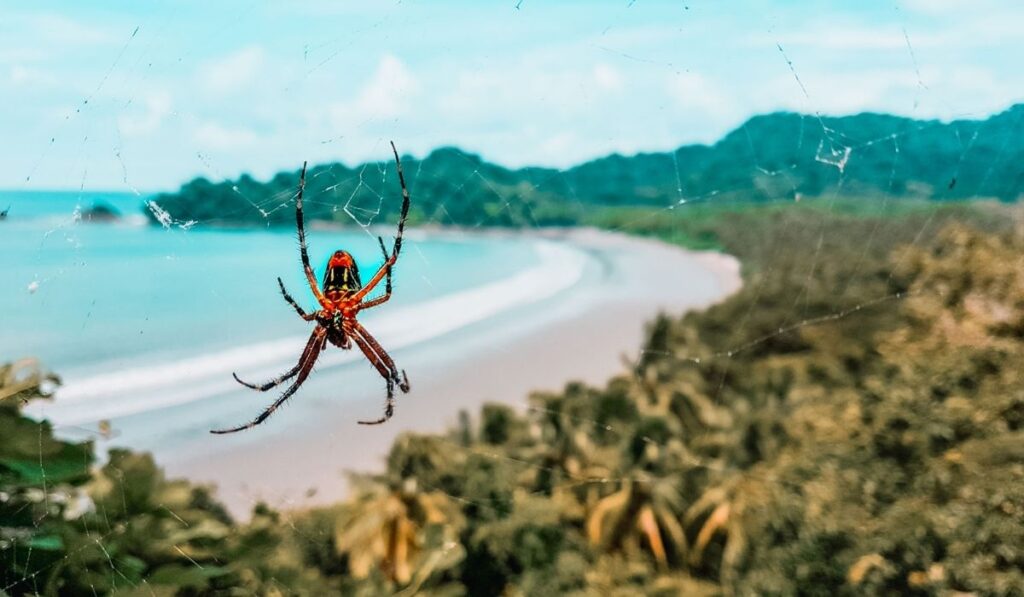
– Get here early. It can get really hot as the day goes on. We suggest exploring all the trails earlier in the day and enjoying the rest that Curu has to offer once it gets very warm.
– If you are planning to do any tours with Curu Wildlife Refuge it is best to do the tours on the same day you plan on hiking the refuge because you have to pay the daily entry fee even if you are only doing a tour.
– Just a warning, the monkeys can be a little crazy. In some spots, they were throwing tree branches at us. Jerks!
– There are plenty of signs, but there are areas with crocodiles. Do not get too close or get in the various ponds and streams.
– You can never have enough drinking water! It’s crazy how fast you can get dehydrated here.
What to Do After Visiting Curu Wildlife Refuge
Curu Reserve is a great place to stop if you want to break up your trip to Montezuma or Santa Teresa on the Nicoya Peninsula.
However, there is definitely enough to do at Curu that you can make a whole day out of it and stay nearby.
If you are looking for something to do in the evening nearby, I HIGHLY suggest taking a bioluminescent kayak tour with Bahia Rica in Paquera.
This area is one of the only places you can experience bioluminescence all year round. It is best during a new moon, but even during a full moon you can see it.
We suggest arranging your night kayak tour with Bahia Rica here
Another fun thing to do in Paquera is to go on a sea fishing trip with Bahia Rica.
Captain Thomas will take you out for a half-day adventure. This area is amazing for Roosterfish, but you can also expect to maybe catch Mahi Mahi, Tuna, Jack Crevalle, Needlefish, or Cubera Snapper.
You can book your fishing tour with Bahia Rica here.
Conclusion: Curu Wildlife Refuge
In conclusion, Curu Wildlife Refuge is the perfect place to visit to experience a diverse array of flora and fauna while on the Nicoya Penisula. If you find yourself in the area we 100% recommend checking this place out.
Let us know if you have any questions as you plan your trip here. We are always happy to help you out!
You Might Also Like:
Costa Rica Travel Details: What You Need to Know
🚗 Should I rent a car in Costa Rica?
Having a rental car will give you the most flexibility when traveling in Costa Rica. This will also allow you to take fun day trips on your own.
- Save 10% Plus Other Perks with Our Adobe Rental Car Discount
- You might also consider; shared shuttle services or private transfer services
🏄🏽 How can I book things to do?
We find that Viator tends to have the most comprehensive selection of activities with secure booking and good cancellation policies.
🍍 I’m overwhelmed with planning. Can you help?
Of course! I suggest joining our Facebook group for specific questions and head to our Start Here Page to get started planning.
✈️ What is the best way to book a flight?
Usually, we have the best luck finding great prices with Skyscanner. Check for flights to both San Jose Airport (SJO) and Liberia Airport (LIR).
🛏️ What is the best way to book my Costa Rica hotels?
We highly suggest Booking.com for hotel bookings and typically use VRBO for Costa Rica vacation rentals.
🗣️What is the main language in Costa Rica?
The main language in Costa Rica is Spanish. Most people working in tourism speak at least some English.
💰 What is the currency in Costa Rica?
The currency used in Costa Rica is the Costa Rican colón (CRC). However, the US dollar is widely accepted in most tourist areas
📞 What is the best way to stay connected?
An eSIM from Airalo is the easiest way to get 4G data while traveling in Costa Rica.
🌴 Is Costa Rica safe?
Generally, Costa Rica is considered safe for tourists. However, like any travel destination, it’s best to use caution and be aware of your surroundings.
🛂 Do you need a passport to go to Costa Rica?
Yes, Costa Rica is its own country. You will need a passport to visit.

Hi! We’re Thomas (the German) and Sarah (the US-er)
We met in Virginia, moved to Germany, and since 2016 we have lived in sunny Costa Rica.
It was a spontaneous decision to move here, but it was the best decision!
Now we spend our days roaming the country to bring you the very best in Costa Rica travel here on Costa Rica Vibes.
Sarah is the writer. Thomas is the one keeping it all together.
Want the whole crazy story?

Sarah McArthur
Sarah McArthur is the co-founder and main writer of Costa Rica Vibes.
She is originally from the United States but has lived in sunny San Jose, Costa Rica since 2016.
She has traveled all over the country and now considers herself a self-proclaimed Costa Rica travel expert.
Want the whole crazy story?

